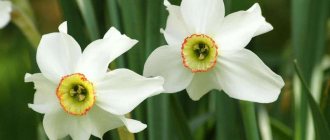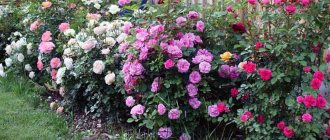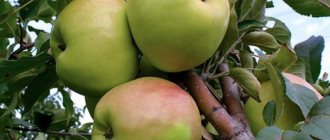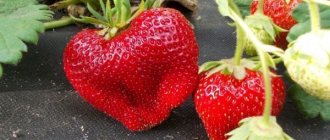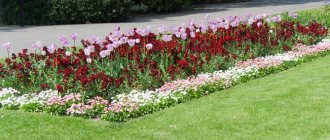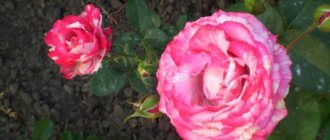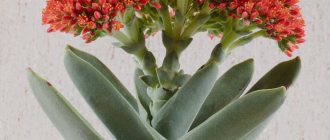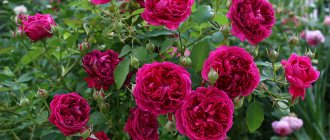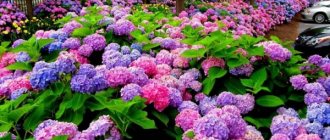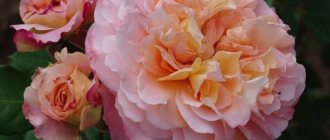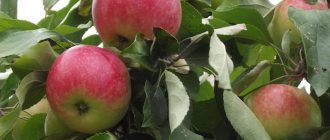No, today's roses do not smell as much as they used to, as you can often hear from flower growers. They are partly right. Breeders also note that ancient garden roses had a stronger aroma than modern ones. In order for the rose garden to smell fragrant, you need to know what to choose.
The aroma of roses is so subtle, refined, balanced that the human olfactory system never gets tired of its smells. What is their attraction? Thus, French roses have a strong spicy scent, Damask and Chinese roses have a fruity scent; musky and mossy - the pungent smell of musk; rose rubiginosa and rose vihura - apple; rose rugosa - carnations... The aroma of tea and Chinese roses has become the basis for the smell of modern roses.
Since 1867, since the creation of the first hybrid tea variety, all the attention of breeders has been paid to the shape and color of the flower. But those varieties were weak-smelling. Only in the 50-60s of the 20th century roses appeared that shook the world with their aroma - Chrysler Imperial, Mister Lincoln, Sterling Silver. And in the 80s, fragrant roses began to appear in large quantities.
With inheritance - depending on your luck
Breeding a fragrant rose requires a lot of work, since the scent gene is not expressed in all descendants. Even when crossing the most fragrant varieties, a hybrid can be odorless. Here, more than anywhere else, the breeder needs luck.
Most modern roses have petals that smell, and it would seem that the more there are, the stronger the aroma. But that's not true. In moss roses, for example, the scent comes from glandular hairs covering the pedicels and buds - they add a refreshing, specific balsamic aroma. Sometimes the smell comes from the surface of the leaves, such as the rust rose.
They don't smell on a cloudy day
Several years ago, James Alexander Gamble, whose name is associated with the American Rose Society's fragrance awards, examined more than 3,000 varieties of hybrid tea roses. He concluded that 25% of varieties are mildly scented or odorless, 20% are highly scented, and the rest are in between. Every rose has its own individual scent.
The smell is influenced by many factors, primarily the variety of roses and climatic conditions. For maximum aroma you need sun and warmth. On a cloudy day they never smell the same as on a sunny day. The smell is also related to the time of day, because it affects the attraction of pollinating insects. Soil moisture also helps prolong the fragrance period as it reduces evaporation rates. The flowers of some varieties smell stronger at the beginning of flowering, others - when fully blooming.
Breathe deeply!
French plant breeder Henri Delbart recommends: “You must know how to smell a rose. The sense of smell requires calm and concentration, starting with the “first breath.” After this, the memory starts working. There should be something similar in your initial scent collection. As with wines, the first sniff brings out the most easily evaporated, authentic flavor tone. Moving the flower lightly, take a second inhalation and more lasting and deeper tones will reveal themselves.”
Henri Delbard presented the structure of the scent of roses in the form of a pyramid. Each part is an olfactory image of a rose.
Vertex. Fragrance intelligence, consisting of tones that evaporate first, belongs to the citrus and aromatic family.
Heart. The personality of the aroma, which emerges later, consists of less volatile types (flowers, fruits, spices and plants).
The basis. The most persistent aroma trace (forest and balsamic).
Buff Beauty
This is one of the most popular musk roses. Its densely double flowers of creamy apricot or yellow-orange color exude a sweet aroma - a mixture of the smell of tea rose and fruit. The most spectacular flowering is observed in partial shade, and in the sun the flowers quickly fade and fade.
The rose bush is drooping; its arched shoots often grow horizontally and tend to cover the ground. The plant is resistant to powdery mildew and black spot, grows quickly and is not very picky in care.
| Purpose | Plant height (cm) | Bloom | Flower size (cm in diameter) | Winter hardiness |
| 180-200 | Abundant, repetitive, from early summer to late autumn. | 9-10 | Average | |
Graham Thomas
This is the most popular yellow-flowered English rose. Its rich yellow buds are not inferior in beauty to even attractive hybrid tea roses. They can fade in the sun, but this does not make their color dull, it just takes on a peach tint. The Graham Thomas variety is also loved for its regular and long-lasting (all summer) flowering. Roses exude a rich aroma with notes of tea.
Rose Graham Thomas is resistant to diseases, but requires special care: pruning, regular feeding, abundant but rare watering, shelter for the winter.
| Purpose | Plant height (cm) | Bloom | Flower size (cm in diameter) | Winter hardiness |
| 100-120 | Continuous, the most abundant wave - early summer. | 10-12 | Average | |
The most fragrant of the fragrant
1. 'Charles Darwin' has reddish buds that open and turn into densely double bright yellow flowers. The height of this English rose is 1.2 m.
2. 'Kolner Flora' looks incredibly picturesque when drooping stems are decorated with dense flowers. The rose grows up to 1.2 m and is famous for its excellent health.
3. 'Scented Whisper' - groundcover beauty up to 80 cm high with loose double flowers.
4. 'Soul' is incredibly fragrant; this bush, up to 1.3 m high, is distinguished by strong immunity and endurance.
5. The aroma of 'Herzogin Christiana' is very special, intensifying in the afternoon and evening. The height of the rose is approximately 1.2 m.
6. 'Ambassador 2014' is a hardy hybrid tea up to 80 cm high. Its exquisite flowers, light on the outside and orange on the inside, exude a fruity aroma.
What's in my scent for you?
- How does the place of growth affect the intensity of the aroma?
The intensity of the smell is most influenced by heat and air humidity - the higher they are, the stronger the fragrance. Gardeners also noted that the flowers of plants of the same variety smell stronger on clay soil than on sandy soil. Roses love the sun, but in too hot a place the scent “fades out,” especially in plants with dark-colored flowers.
- Is it possible to determine the aroma potential by the color of the flowers or whether the rose belongs to a certain group?
The color of the rose does not affect the smell in any way. Flowers of one shade or another can be very fragrant or have no scent at all. But among the groups of roses there are differences: as a rule, shrub and climbing roses are most intensely fragrant, and among ground cover roses, on the contrary, there are many varieties that do not have a scent gene at all.
Jane Austen
These pale, apricot-yellow double roses are very sensitive to rain. But this is their only drawback. The Jane Austen variety was developed in England in 1990 and has not lost its popularity since then.
The flowers have a very sweet and rich (tea) aroma; in the bright sun they almost do not fade and bloom slowly but effectively. The petals have a silky structure, which gives the bud a special charm.
The plant is resistant to black spot and powdery mildew.
| Purpose | Plant height (cm) | Bloom | Flower size (cm in diameter) | Winter hardiness |
| 100-120 | Abundant, repetitive. | 8-10 | Average | |
Zephirine Drouhin
This climbing rose will be the perfect decoration for your gazebo. There are no thorns on the shoots of the Zephyrin Droukhin rose, so you can safely lean against the wall of the building and not be afraid of being pricked by the plant.
Bright pink semi-double flowers exude a light, refreshing and slightly sweet aroma. They bloom earlier than most varieties, and fade only in late autumn. At the same time, on the bush you can find both single roses and those collected in inflorescences of 3-5 pieces.
Rose Zephyrin Droukhin can be affected by powdery mildew and black spot, but with proper care they will not cause much trouble to the gardener.
| Purpose | Plant height (cm) | Bloom | Flower size (cm in diameter) | Winter hardiness |
| 200-300 | Abundant, long lasting continuous. | 8-9 | Average | |
Planting and care
Climbing roses - varieties of permanent flowering - prefer sunny areas located on the south side. Thanks to good lighting, the development of growth is accelerated, and already next summer after planting, abundant flowering can be observed. It is unacceptable to plant young plants in lowlands, as roses do not tolerate stagnant moisture.
Important! In cases where flowers are planted for the purpose of decorating an object, it is best to plant a seedling 50 cm from it.
Experts advise planting bushes in the spring months at sunset. In autumn, seedlings do not have time to adapt and most often die.
This is interesting: The rose has turned into a rosehip, what to do
Continuously blooming varieties of roses will decorate the area and do not require complex care.
Planting process:
- First of all, the holes are prepared, the size of which should be within 50x50 cm.
- The prepared hole is filled with water.
- The seedling is planted in a hole, which is filled with soil and compacted. If you trim the above-ground part of the plant by 15 cm, you can be sure of rapid growth and rich flowering in the future.
Important! If you still need to plant a bush in the fall, it is best to do this in September, when the rose has time to take root, but does not begin to grow.
In the following years after planting, the seedlings do not require complex care, but it is important to carry out in a timely manner:
- bush pruning;
- watering;
- application of fertilizers.
Pruning shrubs allows you to give the plants the desired shape. It is recommended to water roses every 7-8 days, and add organic matter and minerals to the soil as top dressing.
Note! Plants are planted at a slight slope to the support. If planting is carried out near the house, such a distance should be provided so that the water that will drain does not collect at the roots.
Yves Piaget
A very spectacular bright pink flower from the group of hybrid tea roses. Thanks to the wavy petals, the lush and large flowers resemble peonies. They are located singly on strong and almost thornless stems.
Rose Yves Piaget has won many awards for its rich lemon-anise aroma:
- In 1986 – award at the Belfast competition (Ireland);
- In 1982 - gold medal and Cup of the Rose Competition, Relx (Belgium);
- In 1982 – gold medal, title “Golden Rose”, city prize, Rose Competition Cup, Geneva (Switzerland);
- In 1992 - gold medal and Cup of the Bagatelle Rose Competition, Paris (France).
Unfortunately, this spectacular rose grows well only in dry and warm climates; in the middle zone it often freezes, and in rainy summers it refuses to bloom.
| Purpose | Plant height (cm) | Bloom | Flower size (cm in diameter) | Winter hardiness |
| 60-75 | Abundant, repetitive. | 12-14 | Low | |
Types of fragrant roses
Roses are like perfume; it is impossible to immediately understand their aroma. The first inhale is subtle, easily evaporating notes, this is the mind of a rose. Take a second breath - and the heart of the flower will open to you, deeper shades - they are less volatile, the queen of flowers does not open her heart to everyone who passes by.
Lean in, trust, and she will reveal her deepest secrets to you. And then he will see you off, giving you a gentle train as a farewell gift. Each rose has its own scent - there are those that emit a subtle, barely perceptible aroma, while others have a rich aroma. It is easy to recognize the scent of roses, but to define the concept of the smell of a rose is not. Each variety expresses its own shades of aroma, varying degrees of intensity, saturation, and its own nuances.
Researchers say that of all varieties of roses, only 20% have a very fragrant aroma , and 25% do not have it at all, or it is very weak. The rest are somewhere in the middle.
In the morning, roses smell stronger, as if all the scent accumulated during the night is suddenly suddenly released into the surrounding air: “I woke up!” The fragrance also differs as the buds open: during blossoming, their smell is stronger - after all, its purpose is to attract pollinating insects. So the queen of flowers has no idea that people are admiring the rose and its fragrance.
Fragrant roses are divided into types:
- shrubby;
- flowerbeds;
- climbing
Shrubs - up to 1 meter tall, often found in flower beds in gardens and parks, their aroma can be felt by everyone; Bourbon and remontant roses are considered the most fragrant, their fragrance is called “pure”.
Climbing ones - those that curl around supports, are distinguished by a long fragrant trail not only in the immediate vicinity, but also in the distance.
Flowerbeds - have a less noticeable aroma; it can mix in the air with the smells of other flowers. Polyantha and Floribunda varieties will allow you to enjoy the delicate fragrant cloud of a flower garden in your garden.
The best flowerbed fragrant varieties of roses
They are often chosen for planting in rose gardens and classic flower beds. Flowerbed roses include hybrid tea varieties, Floribunda and others.
Flowerbed varieties of roses, so beloved by gardeners, are distinguished not only by their delicate aroma, but also by a wide variety of colors. The bushes take up very little space in the garden or at the dacha; they grow from half a meter to a meter, which allows you to enjoy their aroma, but their most important advantage is their large flowers.
This is interesting: Rose Falstaff: photos, description, and reviews
Among the most famous varieties of flowerbed roses:
- pink - Piroshka;
- soft pink - Myriam, Frederic Mistral;
- bright, deeply saturated - Auguste Renoir, Blue River;
- yellow, orange of various shades - Duftgold, Whiskey, Berolina, compact, Lolita variety, melon shade Paul Ricard, delicate pastel color Sebastian Kneipp.
- white – Evening Star, Margaret Merril.
Among the variety of colors and aromas, other aromatic varieties should be highlighted.
- Beverly is a hybrid tea variety with a cool pink hue and a strong, pleasant aroma. The height of the bush is up to 80 cm, it is very resistant to bad weather, and can bloom until October. Ideal for cutting flowers and bouquets.
- Blue for Yue is a floribunda variety with an unusual lilac-violet, sometimes blue color and a strong aroma. It is unpretentious in care, loves heat, flowers stay on the bush for up to a week.
- Edit Piaf is a rose bush with red, dark red velvety flowers, blooms profusely and delights with a strong, pleasant aroma.
- Hybrid tea varieties have a strong aroma - the dark pink rose Parole, the diameter of whose flowers reaches up to 20 cm, the golden pink Peace with a subtle but delightful aroma, Princess Alexandra of Kent - its warm pink flowers change to a cold shade as they bloom .
Fragrant varieties of shrub roses
Shrub roses, often planted in parks and gardens, can reach a height of up to 2 meters. Among them there are more fragrant varieties; passing by a profusely flowering bush, you can enjoy the fragrance of the best “fragrant” representatives of shrubs:
- Abraham Derby - apricot;
- Migold is a tall bush with bright yellow flowers;
- Penelope - an unusual pearlescent shade;
- Colette is a two-meter shrub with delicate salmon-colored fragrant flowers;
- Fantine Latour - a variety of roses of a soft pink color; Ulrich Brunner Fils - a dense cherry-colored “fragrant” meter-long shrub;
- Belle Story, Muscose - bright pink shade;
- Rose de Resht is the raspberry “queen of the garden”.
- A delightful hybrid species of musk rose - Felicia - not only surprises with its powerful, lush bushes strewn with soft pink flowers, but also with a bright, amazing aroma that envelops you, like a weightless blanket, from head to toe.
- A luxurious fragrant background is provided by the low, up to half a meter soft yellow, sunny rose of the Charles Austin variety, pink with a pearlescent tint Heritage and Souvenir de la Malmaison, and the purple beauty Mme Isaac Pereire, which, according to flower growers, is worthy of the title of the most fragrant rose.
It is impossible to list all the varieties that surprise with their aroma - shrub roses are the most numerous and most “fragrant” type of roses, each variety has a special shade, a note that makes it unique.
The enchanting aroma of climbing roses
Climbing roses - a type of garden roses, are vines reaching up to 5 meters in length. They are often used in landscape design, decorating parks and garden gazebos, columns, arches, and hedges. Special supports and gratings are created for them. Decorative vines bloom profusely, decorating parks, gardens, and suburban areas not only with bright flowers, but also with a unique aroma.
This is interesting: Rose Aloha (Aloha)
The only drawback when growing them in the middle zone and northern latitudes is the need to cover them for the winter, saving them from frost and cold, but in the south they bloom almost all year round . Despite this, landscape designers and flower growers grow them everywhere.
The most fragrant among climbing roses are the following varieties:
- Rosenresli - with dark pink flowers.
- Albertine is a 4-meter climbing beauty with a delicate apricot shade of flowers and a delightful, indescribable aroma.
- Compassion is a large-flowered, salmon-colored variety.
- Zepherin Drouin is a Bourbon large-flowered queen, devoid of thorns, with an unusual color - pink-red buds with white spots and streaks.
- Constance Spry – climbing branches of pink-red roses are suitable for decorating the walls of a house, cottage, or gazebo in the garden.
- Laguna - has bright pink, densely double large flowers; flower growers like it for its disease resistance and strong, even intoxicating aroma.
- Golden Gate - semi-double bright yellow flowers with a distinct fruity aroma. The rose is unpretentious in care, which is why gardeners love it.
- Pomponella - Its unusual, pom-pom-like flowers are a rich pink color. It does not require care, is not capricious, practically does not get sick, and the aroma emits a delicate, delightful, incomparable aroma.
- Jasmine is a variety of vine with a subtle apple aroma. It will decorate any area - flexible three-meter lashes will wrap around a gazebo, an arch, filling the air with a delicate scent, decorating the landscape with soft pink double flowers.
Lavender Lassie
This fragrant flower belongs to musk hybrids. Lavender Lassie is a climbing rose or large scrub. Its deep pink (with a slight bluish tint) double flowers are shaped like antique roses. On one stem there are 5-10 large buds, under the weight of which the shoots often droop.
Rose Lavender Lassie is resistant to various diseases and tolerates partial shade.
| Purpose | Plant height (cm) | Bloom | Flower size (cm in diameter) | Winter hardiness |
| 160-180 | Abundant, twice a season (early summer and in autumn). | 7-8 | Average | |
Lady Emma Hamilton
It's hard to take your eyes off this delicate rose! Its unusual orange-yellow-pink color not only does not fade, but becomes more saturated over time, especially in the evening and in rainy weather. The buds exude a pleasant aroma with fruity notes of pear, grape and citrus.
These bright tangerine-like flowers look spectacular against the background of bronze leaves that gradually turn green with age. Rose Lady Emma Hamilton forms an upright but slightly branched bush that is ideal in borders.
| Purpose | Plant height (cm) | Bloom | Flower size (cm in diameter) | Winter hardiness |
| 100-120 | Abundant, repetitive, almost continuous. | 10-12 | Average | |
Features of climbing roses
East Asia is considered the birthplace of all modern varieties and varieties of climbing roses. It was there, on the territory of ancient China, Japan, and Taiwan, that wild climbing roses grew, which over time began to be cultivated and distributed throughout the world. The main difference between climbing roses is their type of growth. Thanks to their long, curly shoots, they spread along the ground, and if they are tied up, they entwine various structures.
The shoots of these roses are quite flexible, so if desired, this rose can be given a certain shape
The shoots of these roses are quite flexible, so this rose can be given a certain shape if desired. To do this, a support of a certain type is made and as the bush grows, its pagons are directed to this support so that it gradually becomes entwined. The maximum length of shoots of climbing roses is 17 m, but this is very rare. Usually the length of the lashes is only a few meters, but this is more than enough to create a beautiful composition.
Interesting!
In ancient East Asian countries, all climbing roses were called Vihura.
